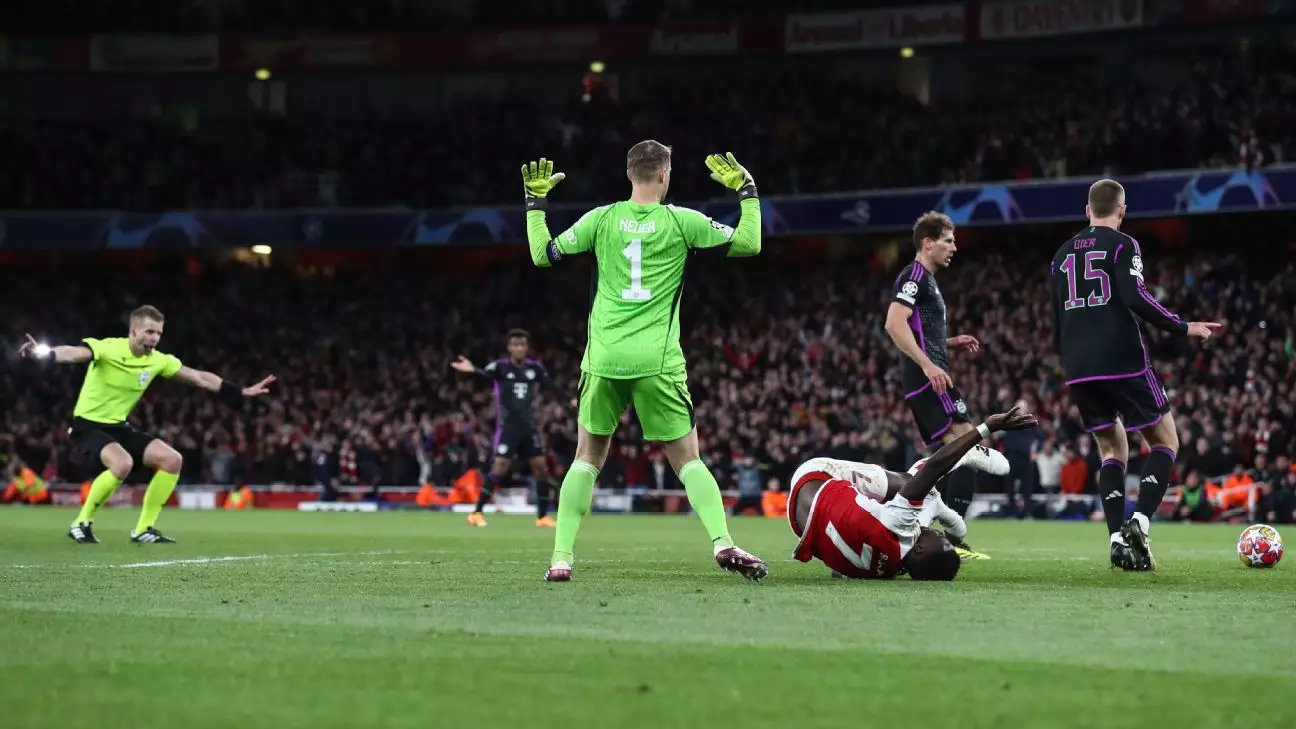The Video Assistant Referee (VAR) has been the center of attention across Europe, sparking controversy in almost every match it intervenes in – even in high-stakes Champions League fixtures. One such instance occurred during the quarterfinal clash between Arsenal and Bayern Munich, where three major incidents raised eyebrows. The first incident involved Bukayo Saka going down in the box after contact with goalkeeper Manuel Neuer. Despite claims for a penalty, the on-field decision stood, and VAR upheld this decision upon review.
The process of VAR protocol and the Laws of the Game played a significant role in determining the outcomes of these controversial incidents. In Saka’s case, it was evident from the replays that the attacker initiated contact with Neuer, leading to the decision of no penalty being awarded. This raises questions about players’ behavior in the box and their tactics to influence referees’ decisions. Similarly, the incident involving Gabriel picking up the ball from a goal kick created chaos, with the referee opting not to award a penalty despite potential violations of the rules.
The referee’s discretion in such situations becomes crucial, as illustrated by the example of Gabriel’s handling of the ball during the goal kick. While technically a penalty could have been given, the referee’s decision to let play continue is a testament to the complexity of applying the rules in real-time scenarios. The introduction of VAR has added another layer of scrutiny to referees’ decisions, with the technology often supporting the on-field calls even in contentious situations.
Another incident involving Harry Kane’s clash with Gabriel raised questions about a potential red card offense. Despite the booking, the VAR review concluded that no red card was warranted, highlighting the subjective nature of determining violent conduct on the field. The interpretation of players’ actions and intentions plays a significant role in VAR reviews, with referees looking for specific cues like a clenched fist to differentiate between aggressive acts and normal football actions.
The constant scrutiny of VAR decisions against the spirit of the game versus technical infractions further complicates the role of technology in officiating matches. Instances like the penalty awarded in the 2. Bundesliga fixture highlight the fine line between following the letter of the law and preserving the essence of fair play. While VAR aims to correct clear and obvious errors, its interventions sometimes lead to outcomes that do not align with the game’s fundamentals.
The controversy surrounding VAR decisions in elite competitions like the Champions League underscores the challenges of implementing technology in traditional sports officiating. As football continues to evolve, finding the right balance between upholding the rules and preserving the game’s spirit remains a key priority for governing bodies and stakeholders. The scrutiny of every VAR decision serves as a reminder of the evolving nature of football and the ongoing quest for fairness and accuracy in officiating.
